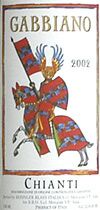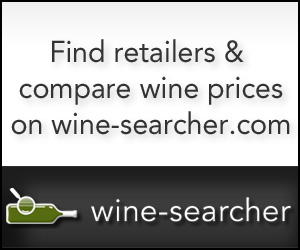|
Lemonade from lemons
Wine, as has often been pointed out, is ultimately an agricultural product, made from grapes; and like any other bounty of the farm, its quality is inextricably tied to the weather. This, of course, is why vintage is so important in wine appreciation (and wine buying), prompting the more obsessive among us to memorize extensive vintage charts of the world's wine regions, and the rest of us to have reference books and Web links handy so we can look it up. Following the torrid summer of 2003 in Europe and the recent primeurs tastings in Bordeaux (March 29, 2004 Wine Advisor), most of the wine media's attention is focused on the wines of that recent vintage, amid controversy whether such hot weather will foster classic wines like the still-fabled 1947 vintage or merely overripe, "California-style" wines. But overshadowed by this relatively happy debate, the wines of 2002, not 2003, are turning up this spring on retail shelves. And there's not much dispute that, in many parts of Europe, 2002 was one of the worst years for wine-growing weather in recent history. As reported at the time (Sept. 18, 2002 Wine Advisor), flooding in the Southern Rhone and Austria, vine-damaging hailstorms in some parts of Northern Italy and rains of "biblical proportions" (as the experts at London's Berry Bros. & Rudd put it) in much of the rest of Northern Italy yielded wines of lackluster quality in many regions and eliminated the vintage entirely in a few. It is important to note, however, that vintage ratings are only broad generalizations, applicable only to specific regions, and often represent only one wine taster's opinion. The 2002 vintage wasn't as bad in Bordeaux as in Chateauneuf-du-Pape, for example; and in Burgundy it wasn't bad at all. '02 is looking good in Southern Italy and in California's top wine regions, while cool weather in Australia yielded mixed results, and the outlook is so-so in Spain, the experts say. There's only one way to gauge a wine for certain, and that's by tasting. Those who skip entire years based on vintage generalizations stand to miss some good wines; and if lack of enthusiasm holds prices down, that's an added benefit. For today's tasting, I picked up the first 2002 Chianti I've seen around, the familiar medieval knight label from Castello di Gabbiano, a large but consistent producer whose wines I've generally found reliably good values. Tuscany, the north-central Italian wine region around Florence and Siena that incorporates Chianti, didn't suffer weather quite as horrible as Piemonte (Northwest) or Friuli-Venezia Giulia (Northeast) in 2002, but cool weather and drenching rains produced a vintage that the experts are rating average at best. The producer Antinori elected not to make his "Super Tuscan" Tignanello at all in 2002; but commercial wine is a business, after all, and most wineries can't simply decline to make wine in substandard years. Success comes from careful grape selection and the careful application of wine-making skills to get the best out of a poor lot. Gabbiano's simple Chianti, a wine that usually sells for well under $10 in the U.S., is never a wine to contemplate but usually an easy gulper. The 2002 doesn't stray far from that description, and if it's a bit more herbaceously "green" and thin by Chianti standards, it still boasts the snappy, lemony acidity that makes Chianti a fine food wine.
VINTAGE INFORMATION ONLINE:
For a simple but detailed text-only chart of world wine regions kept scrupulously current (through 2004 in the Southern Hemisphere), visit Anthony Hawkins' World Wine-Vintages Tables on WineLoversPage.com:
TALK ABOUT WINE ONLINE If you prefer to comment privately, feel free to send me E-mail at wine@wineloverspage.com. I'll respond personally to the extent that time and volume permit.  Gabbiano 2002 Chianti ($7.99)
Gabbiano 2002 Chianti ($7.99)
This dark reddish-purple wine gleams against the light with the characteristic reddish-orange glints of Sangiovese-based wines. Rather underripe "green" and "veggie" scents and a distinct whiff of white pepper dominate more typical Chianti black cherries, but there's more fruit on the palate, where snappy sour cherries and lemon-squirt acidity come together in a clean and fairly long flavor. Lean and somewhat austere, it lacks the warming nature that makes more typical Chianti such an appealing "comfort wine;" but zippy acidity and varietal fruit save it, yielding a good food companion at a price that's right. U.S. importer: Beringer Blass Wine Estates, Napa, Calif. (April 24, 2004) FOOD MATCH: It's almost a cliche to serve Chianti with red-sauced Italian dishes, but it's a cliche that works. Crisp acidity makes it an easy food match that works well with red meat, roast chicken or cheeses; we paired it with leftover rosticeria chicken from a local Mexican spot, sliced over a dinner salad. VALUE: "Off" vintage or no, it's hard to quibble with an $8 price tag for a snappy, versatile table wine like this. WHEN TO DRINK: It should last for a few years under good storage conditions, but don't expect it to improve with age.
WEB LINK: You'll find the winery Website at
FIND THIS WINE ONLINE: Research Gabbiano on Wine-Searcher.com, 
California Wine Club: Not all wine clubs are alike! Not all wine clubs are alike! The California Wine Club is the only wine service in America featuring wines exclusively from California's real-working, smaller family-owned wineries. Every wine is hand-selected by club owners Bruce and Pam Boring. There is never any bulk, closeout or private label wines: This they guarantee!
You may choose to receive wines monthly, bi-monthly or even quarterly. Each month is $32.95 plus shipping and includes two bottles of award-winning wine and a detailed 8-page newsletter, Uncorked. You can also reorder your favorites at savings up to 50 percent off normal retail. Give them a try, mention The 30 Second Wine Advisor and the first month will be on them! Call 1-800-777-4443 or visit This week on WineLoversPage.com Here are links to some of our recently published articles that I think you'll enjoy:
• Bucko's Wine Reports: 100 new wine releases
• Nat Decants: Taxing Wines
• WebWineMan: The Black Rooster Crows Last Week's Wine Advisor Index The Wine Advisor's daily edition is usually distributed on Mondays, Wednesdays and Fridays (and, for those who subscribe, the FoodLetter on Thursdays). Here's the index to last week's columns:
• A Langhe and winding road (April 23, 2004)
• Too warm? Too cold? (April 21, 2004)
• The lure of the new (April 19, 2004)
• Complete 30 Second Wine Advisor archive:
• Wine Advisor FoodLetter: Alfredo "lite" (April 22, 2004)
• Wine Advisor Foodletter archive:
SUBSCRIBE: Administrivia To subscribe or unsubscribe from The 30 Second Wine Advisor, change your E-mail address, or for any other administrative matters, please use the individualized hotlink found at the end of your E-mail edition. If this is not practical, contact me by E-mail at wine@wineloverspage.com, including the exact E-mail address that you used when you subscribed, so I can find your record. We do not use our E-mail list for any other purpose and will never give or sell your name or E-mail address to anyone. I welcome feedback, suggestions, and ideas for future columns. To contact me, please send E-mail to wine@wineloverspage.com All the wine-tasting reports posted here are consumer-oriented. In order to maintain objectivity and avoid conflicts of interest, I purchase all the wines I rate at my own expense in retail stores and accept no samples, gifts or other gratuities from the wine industry.
Monday, April 19, 2004 |




